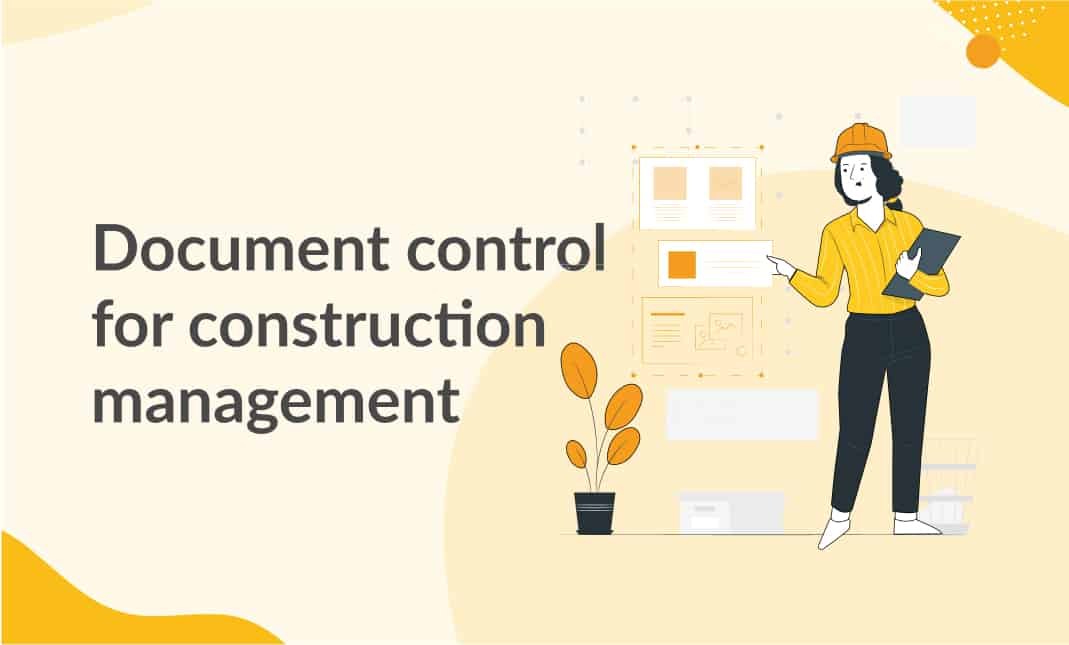Secure Your Success: Construction Document Management Approaches for Professionals
Secure Your Success: Construction Document Management Approaches for Professionals
Blog Article
Optimizing Task Collaboration: Designer's Finest Practices in Building And Construction Paper Management
In the intricate realm of building tasks, the efficient monitoring of construction papers stands as a foundation for success. Amidst this intricacy exists a critical inquiry: exactly how can designers improve partnership processes to boost job results?
Leveraging Cloud-Based Systems
Leveraging cloud-based systems is a basic strategy for modern engineers in enhancing building record management procedures. By transitioning from standard paper-based systems to cloud solutions, designers can streamline cooperation, improve record access, and improve total project effectiveness. Cloud-based systems offer engineers the ability to shop, share, and upgrade construction papers in real-time, making certain that all team members have accessibility to the most current details no matter of their location. This access promotes smooth communication and coordination among project stakeholders, causing fewer mistakes and delays in the building and construction procedure.
Furthermore, cloud-based systems offer a secure setting for storing delicate project details, providing security, normal backups, and customer approval settings to protect data integrity. Engineers can likewise take advantage of the scalability of cloud services, enabling them to readjust storage capability and functionality based on job demands. Generally, leveraging cloud-based systems encourages engineers to maximize their construction file management processes, driving better collaboration, performance, and success in their projects.
Carrying Out Version Control Systems
Having developed the advantages of cloud-based systems in building and construction document management, engineers can now boost their document control processes by executing Variation Control Equipment. Variation Control Equipment (VCS) are essential tools that track modifications in records, making sure that employee are always collaborating with the most recent and most exact info. By applying VCS, engineers can preserve a central database where all task papers are stored, enabling smooth partnership while lessening the danger of errors and version problems.
This feature is specifically beneficial in building and construction tasks where style versions and modifications are usual. This transparency not only boosts accountability however additionally aids in settling conflicts or inconsistencies that may develop throughout the task lifecycle.
Establishing Communication Methods
To make certain efficient and reliable project sychronisation, designers have to develop clear and durable communication procedures within their construction record administration procedures. Communication methods define the approaches, frequency, and channels where staff member exchange details, updates, and feedback. One necessary facet of establishing these protocols is identifying a central communication system where all project-related conversations and file sharing can take location. This platform can be a job monitoring software program, e-mail strings, or cloud-based storage solutions. By establishing standards on just how details is shared and how group participants communicate with each various other, architects can simplify the circulation of data and prevent miscommunications or hold-ups in the building procedure.
Furthermore, communication procedures must additionally consist of standards on how to manage conflicts, modification orders, and immediate problems that might emerge throughout the project lifecycle. Developing a structured approach to communication makes sure that all stakeholders are on the very same page, promotes openness, and inevitably adds to the successful conclusion of the building task.
Using BIM Software Application for Sychronisation
BIM software application plays a crucial duty in improving coordination among job group members in the building and construction industry. Structure Information Modeling (BIM) promotes partnership by giving a centralized platform where engineers, designers, professionals, and other stakeholders can work together in a collaborated manner. Through BIM software, task individuals can access and upgrade a common model that includes in-depth information about the structure design, construction components, and task schedules.

Additionally, BIM software program allows real-time cooperation and interaction amongst team participants, regardless of their physical area. Through cloud-based BIM platforms, job stakeholders can access the current job info, track modifications, and make informed choices without delay. Overall, leveraging BIM software program for control improves job effectiveness, performance, and ultimately causes successful task results.
Ensuring Information Security and Conformity
In the world of building document administration, securing information stability and making certain governing compliance are critical factors to consider for designers and various other project stakeholders. Engineers have to carry out robust protection steps to secure delicate project details from unauthorized accessibility or violations. Using safe and secure cloud storage space services with file encryption protocols and access controls can help minimize dangers connected with information burglary or loss. On a regular basis updating software and systems, carrying out safety audits, and giving team training on data safety and security ideal methods are essential action in maintaining a secure atmosphere for construction file monitoring.

Conclusion
Finally, engineers can maximize job cooperation in building and construction record monitoring by leveraging cloud-based systems, executing version control systems, developing interaction protocols, using BIM software program for sychronisation, and making sure information security and compliance. These finest practices help streamline the building and construction process, boost communication among task stakeholders, and enhance performance in task distribution. By complying with these standards, engineers can properly handle construction papers and assist in successful job results.
Via BIM software application, project individuals can access and update a shared design that includes detailed info about the building style, building parts, and job schedules.
Through cloud-based BIM platforms, job stakeholders can access the most current task information, track modifications, and make informed decisions immediately - construction document management. On the whole, leveraging BIM software for sychronisation boosts project effectiveness, efficiency, and inevitably leads to effective project end results
In final thought, designers can maximize project collaboration in building and construction document management by leveraging cloud-based platforms, applying variation control systems, developing communication procedures, utilizing BIM software program for sychronisation, and read making sure data safety and more tips here compliance. These finest practices aid simplify the building process, boost communication amongst task stakeholders, and improve performance in task distribution.
Report this page